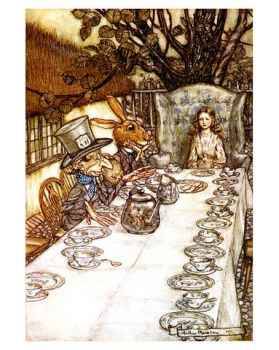I bought this book because I enjoyed the movie and I wanted more background, insight, information on the characters.
However, this is one of those rare occasions where the movie is better than the book.
Miranda Priestly, Editor-in-Chief of Runway magazine, is, if anything, more impossibly demanding, more obnoxious, more over the top than in the movie. There are no humanizing moments whatsoever, although there is a bit more about her background and where she came from. But no explanation of how she became so powerful and so demanding.
Andrea Sachs is a newly graduated from Brown and lands the job as Miranda's personal assistant. When offered the job on a Friday, she tells Human Resources that she can't possibly start on Monday because she has nowhere to live in New York City. That was my first, "Huh?" moment. Why couldn't she commute, like almost every other drone I know?
Be that as it may, Andrea finds a room to sublet and begins her new life. Miranda is on "vacation," so her impossible demands are not quite as intense as they will be when she returns. Andrea has about a month to learn the ropes before she meets Miranda and learns, first hand, what "demanding" is all about.
Unlike the movie, this Andrea doesn't ever buy into the idea of high fashion. She takes delight in getting back at Miranda and the publishing company in small ways, such as taking a cab to work and tipping the cabbie more than generously, then writing off the fare. Or by purchasing coffee for the homeless on the street when she buys Miranda's lattes.
I found myself getting angry with Andrea's boyfriend. He has chosen to teach disadvantaged children in Brooklyn public schools, which makes his job morally "better" than hers. Near the end of the book, Alex tells Andrea, "My Andy would have never even entertained the idea of choosing a fashion show or a party or whatever over being there for a friend who really, really needed her. Like, really needed her."
Like, Andy chose to go to the parties or the fashion shows. Sorry--it was part of her job, just like going to faculty meetings or classes or awards dinners are part of a teacher's job. I've done my share of business dinners and going to dinner with customers or clients is nothing like partying with friends. Especially if it's your company giving the party and your responsibility that everything goes well. Did Alex understand what Andy did and why? Did he even care?
On the other hand, did she tell him that Miranda had contacts at The New Yorker and would be able to get Andy the writing job that she really wanted?
And then there's Lily, Andy's best friend and a graduate student. Lily is a free spirit, but her drinking and her life begin to spin out of control. Why? We're never told.
There are a lot of "flashback" scenes which often confuses the timeline of the story.
There is also the assertion throughout the book that Andrea will learn more from working at Runway in a year than she will in five anywhere else. What she learned, other than how to bite her tongue, balance several lattes, and throw her boss's name around, is not quite clear. And how it will help in the magazine business--especially writing for them--still puzzles me.
Meryl Streep brought some humanity to her Miranda Priestly. Anne Hathaway is more believable as a new college grad from the Midwest than the Andy Sachs as written. (C'mon--she's from Connecticut and she graduated from Brown! And she acts as if she doesn't know anything about Manhattan, including the idea of--oh, I don't know--getting a street map?)
According to the reviews at Amazon.com, Lisa Weisberger, the author, actually worked for Anna Wintour at Vogue, who was the model for Miranda. (Ms. Wintour has a brief cameo in the book as well.) While I sympathize with her plight and I'm glad I never had to work for a boss like that, I never really felt much for Andy. This book has no heart. Surprisingly, the movie does.
On the March Hare scale: 2 out of 5 Golden Bookmarks. An okay book for beach or plane.
Tuesday, August 22, 2006
Book Review: The Devil Wears Prada
Posted by
March Hare
at
12:39 PM
![]()
Subscribe to:
Comment Feed (RSS)




|